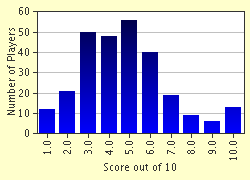Quiz Answer Key and Fun Facts
1. Before the development of mainframe computers, data processing was done with cards. They were sorted, merged, and run through tabulating machines to create reports. What was a person called who worked in this field?
2. Punch cards were commonly called IBM cards, except by employees of Univac. They were invented by Herman Hollerith and measured 7 3/8" by 3 1/4". Why was this size chosen?
3. Each punch card had 80 columns and each column contained one or more punches to represent letters, numbers, and special characters. Many companies continued to use round holes after IBM developed the rectangular hole since IBM held the patent.
4. In the early 1960s the IBM 1620 was introduced and used in many colleges. I was able to play with the one at UCLA. It was unique for the following reason.
5. If you saw the statement "add pay to total" what computer language would you be looking at?
6. A high level language could usually be run on any computer while a low level was designed for a specific computer.
Which of the following is a low level language?
7. The Tabulating Machine Company became which of the following companies?
8. The IBM 360-67 was a virtual computer. What did that mean it was capable of doing?
9. A computer tape needed a ring to be inserted into its reel in order to use it.
10. You are looking at a cobol program and see "pic x(10)". What does that mean?
Source: Author
denmarks
This quiz was reviewed by FunTrivia editor
crisw before going online.
Any errors found in FunTrivia content are routinely corrected through our feedback system.

